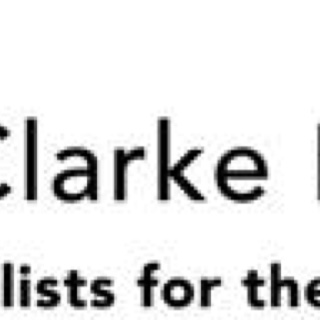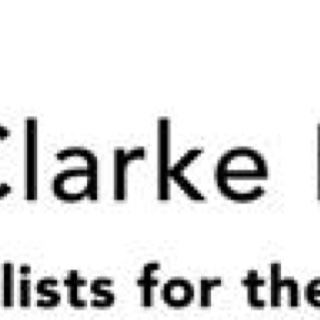Information
-
Month/Document No.
-
Audit Title
-
Client / Site
-
Elevation assessed & works completed.
-
Conducted on
-
Prepared by
-
Location
-
Personnel
-
RULES OF WIR
Timetable:
1. All reports must be up to date.
2. Proper date and document number must be recorded on the cover page of the report.
3. Three days is maximum time over the date that the report must be in for , any date later than this will not be acceptable(timetable is available in the MClarke's reporting folder on the network).
4. All reports have -
Reporting Rules:
1. Project Managers need to monitor quality of work constantly and keep good records of their findings as Quality of works is of the upmost importance to our company.
2. Generally there should be reports prepared for each elevation, where all assessed levels are listed. Each single report may include more than one elevations. However it must be clearly described in the introduction which facades have been examined and what works have been completed during the assessment
3. When job is being handed over to the project manager/contract manager. Project manager must prepare a construction plan/drawing of the project, number each elevation and then refer to these numbers when conducting Work Inspections.
4. Construction plan layout drawings with numbered elevations must be saved onto the M Clarke’s Reporting folder on the network.
5. Each report should include in the Introduction (cover page of report) description of the assessed façade (assigned number) along with description of type of works which were completed and assessed by the Project Manager.
6. We have issued drawings reference numbers D01, D02, D03, D04, D05... These are available in “M Clarke’s Guidance Booklet", and need to be referred to throughout WIR and clearly show what is required.
7. The report with error/failure marked RED, must be saved on the system. The next report that will follow must show how the error was rectified. If improvement was not possible e.g. Due to soft ground/lack of access- it needs to be described/explained. The answer’s column still need to be highlighted Red.
However, if the error was rectified the section should be changed into green. The comment section is to be used for explanations of how and when the error was rectified.
8. If Project Manager has found an error during the assessment, it must be noted and fixed before consecutive stages of works progresses e.g. CP boarding cannot start before Metsec sub frame is properly fixed.
Quality Control Manager cannot accept the next WIR report until everything is fixed and up to date on the previous report, this is to make sure that all errors are corrected, and there is no error omissions.
9. All reports have to be send to a main contractor and subcontractors. -
Elevation assessed & works completed.
-
Completed by Subcontractors:
Acceptance criteria/ Rules of Proper Workmanship 1. No work to be performed unless environmental conditions are as specified in therms of temperature, humidity and wind exposure. 2. Mixing time and proportions must be correct as per specification. 3. Safe systems of work must be enforced for working at height.
A. Pre-start checks.
-
1. Are conditions, access safe?<br>
-
-
Add media
-
2. Are materials properly stored?
-
Add media
-
3. Is substrate dry , clean and free from defects.?
-
Add media
-
Signed off by the project manager?
PART. B. PREPARATION FOR RAINSCREEN CLADDING
-
1. Have the Operatives been provided with sufficient training in the specified system?<br>
-
Add media
-
2. Has the operative been given the relevant drawings and details to complete the works?<br>
-
Add media
-
3. Have the windows / curtain wall / doors been installed to correct levels and handed over to main contractor?<br>
-
Add media
-
4. Are EPDM's correctly installed?<br>
-
Add media
-
-
5. Is the wall substructure to correct line and level?
B1. Flashing, pods, sills, trims
-
6. Are cills, pods and flashings installed to the correct design details? Thickness, colour and depth?<br>
-
Add media
-
7. Are cills, pods and flashings installed using correct fixings and fixing centres?<br>
-
Add media
-
8. Are cills, pods and flashings installed to suit correct locations ?<br>
-
Add media
-
9. Are cills of proper quality and shape ?<br>
-
Add media
-
10. Are window supports fixed properly ?(are packers used of correct shape, are the fixings long enough)<br>
-
Add media
B2. Breather membrane
-
11. Have all vents, brackets, rainwater pipes been taken through the CP board and handed over to the main contractor?<br>
-
Add media
-
12. Has EPDM been installed to all vents, rwp's/louvre bracket fixing centres?<br>
-
Add media
-
13. Has the correct and specified breather membrane been installed?<br>
-
Add media
-
14. Has the breather membrane been dressed out and over horizontal flashings / pods and taped and sealed?<br>
-
Add media
-
15. Has breather membrane been taped at vertical joints and overlapped 300mm at horizontal joints?<br>
-
Add media
-
16. Has the breather membrane been taped to and around all openings protrusions, as specified on the Reference Drawing D 03 (see MClarke reference booklet)<br><br>
-
Add media
-
17. Have all parts of EPDM properly overlapped and secured with Dafa tape?<br>
-
Add media
-
18. Have all location of EPDM, where fixings/bolts had to go through been secured/sealed with silicone?<br>
-
Add media
B3. Rain screen Cladding - Brackets and rails.
-
19. Have subframe brackets been installed in accordance with the subframe layout drawings?<br>
-
Add media
-
20. Have thermal pads been installed behind brackets?<br><br><br>
-
Add media
-
21. Have brackets been fixed at stud locations?<br><br>
-
Add media
-
22. Have bracket fixings been torqued correctly using correct torque drill?( was the screw driver sat at correct torque)?<br><br>
-
Add media
-
23. Have T-rails been fixed into brackets through specified holes, so as to permit thermal movement of the T-rail.<br><br><br><br>
-
Add media
-
24. Has the Project Manager checked the level with string line or laser?<br><br>
-
Add media
-
25. Has there been one dead fixing per rail minimum?
-
Add media
-
26. Is the top and bottom of the rails overhanging no more than indicated on the rail setting drawing.?<br><br>
-
Add media
C. Insulation
-
27. Have fire barriers been fitted and at correct locations?<br><br>
-
Add media
-
28. Have fire breaks been mitered at the edges of the façade so as to provide continuity of intumescent layer.?<br>
-
Add media
-
29. Have fire pins been installed minimum one per board?<br><br>
-
Add media
-
30. Has insulation been fitted as tight as possible?<br>
-
Add media
-
31. Have all outlets, brackets, vents, edges of insulation board, joints etc. been taped up with silver tape?
-
Add media
D. Cladding Panels
-
32. Have drilling holes in rail been made of proper size?<br>
-
Add media
-
33. Have drilling holes in panels been made of proper/specified size, (centralising tool must be used as per Reference Booklet Drawing No. D04)<br><br>
-
Add media
-
33.1 Have there been one fixed point retained in each panel?
-
Add media
-
34. Has rivet spacer nose piece been used on all rivet guns? <br>Rivet spacer nose piece as per specification Reference Drawing No. D05 (see MClarke reference booklet D05)<br><br>
-
Add media
-
35. Has the trespa been held tight against rails during fixing stage, especially at facets?<br><br>
-
Add media
-
36. Has Flymesh been fitted at base and at cill location?<br><br>
-
Add media
-
37. Has the cladding been hose tested?<br><br>
-
Add media
I. Post installation checks.
-
38. Has adequate protection been used?<br><br>
-
Add media
-
39. Has work area been left clean on completion?<br><br>
-
Add media
-
Add media
-
signed by main contractor representative.
-
signed by project/contract manager.








